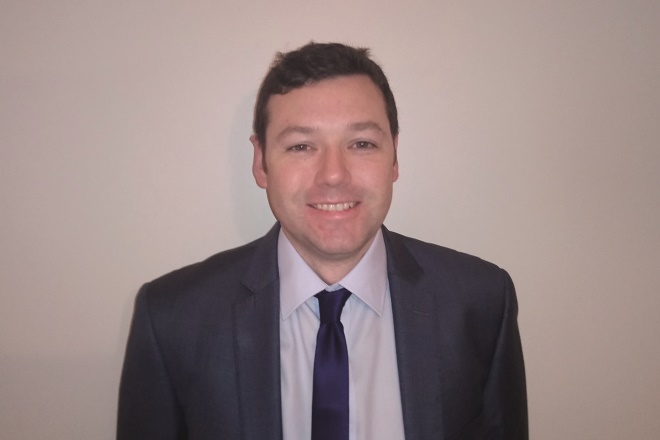
Shutterstock.com / MAG
Most people know that if you live in Scotland, Wales or Northern Ireland you receive free prescriptions whereas if you live in England you don’t. But there are more wide-ranging differences between the health systems in the four devolved nations of the UK, and community pharmacy practice has developed differently within them.
Devolution in the UK took effect in 1999 when powers were transferred from Westminster to the Scottish Parliament and Welsh Assembly on 1 July of that year, and to the Northern Ireland Assembly on 2 December. Since then, each of the four nations has had power over the organisation and budgets of the NHS in their own jurisdictions.
“Healthcare is devolved and therefore practice and service models have evolved and continue to develop to best meet the specific priorities, needs and challenges in each of the four UK administrations,” says Rose Marie Parr, Scotland’s chief pharmaceutical officer (CPO).
“With responsibility for the health service devolved across the UK, it was inevitable community pharmacy arrangements would diverge over time,” adds Andrew Evans, CPO in Wales.
With responsibility for the health service devolved across the UK, it was inevitable community pharmacy arrangements would diverge over time
While a number of reports have analysed the differences in the four systems since devolution, few have looked specifically at pharmacy[1],[2],[3],[4]
.
The key themes are broadly the same across the four nations: the integration of pharmacists and pharmacy technicians into the wider health team; promoting the role of pharmacists in relieving pressure on GPs and accident and emergency (A&E); and medicines optimisation. However, the success of various initiatives differs between the countries.
For example, in the case of minor ailment services, Scotland now has a nationally commissioned service while, in England, minor ailment services have been decommissioned and access is down to a postcode lottery.
With practice diverging across the UK there is an opportunity for each of the four countries to compare, contrast and learn from each other, particularly as each country faces similar challenges in terms of increasing complexity of care, financial pressures and an ageing population.
However, differences across the countries also represent the individual priorities and people in the four nations, and highlight the localised progress that has been made possible by devolution nearly 20 years ago.
The Wales perspective
One key focus in Wales is the redesign of the community pharmacy contract, which will, according to the Welsh cabinet secretary for health, wellbeing and sport Vaughan Gething, place an increased emphasis on improving medication safety and service quality.

Source: Nick Treharne
Welsh cabinet secretary for health, wellbeing and sport Vaughan Gething says that the redesign of the community pharmacy contract will place an increased emphasis on improving medication safety and service quality
“In community pharmacy, we are taking relatively small but incredibly important steps to redesign the contractual framework, incentivising quality and the wider availability of clinical services like our national common ailment service [the Welsh equivalent to a minor ailment service] and the discharge medicines review service,” explains Evans.
Community Pharmacy Wales (CPW) is working in close collaboration with the Welsh government to agree future funding and, according to Judy Henley, director of contractor services at CPW, in future, the focus will be “less on dispensing prescriptions and more on value and quality community-based services”.
Announced in March 2013, the national common ailment service in Wales called Choose Pharmacy, has now been rolled out to more than half of community pharmacies. In April 2017, Gething announced that, from April 2018, funding will be available to enable all pharmacies to access the IT application needed to run the service by the end of 2020. The aim is to reduce the number of people who need to be referred to GP out-of-hours services and A&E departments, as well as to improve patient safety.
Evans says that the Choose Pharmacy IT system is making a “tangible difference to the way community pharmacists practise”.
“More than half of pharmacies in Wales now have access to the [Choose Pharmacy] system, [which is] supporting clinical service delivery, giving them access to information about patients’ medicines on discharge from hospital, and very shortly access to the Welsh GP record,” he added.
Another area in which pharmacists are making a difference in Wales is as part of the 111 Wales telephone helpline service, which originally started life as a pilot but has answered almost 145,000 calls over the past year.
“Pharmacists have become integral to the provision of medicines information, advice and access to urgent care, as 111 Wales rolls out to more parts of Wales,” says Evans.

Courtesy of Andrew Evans
Chief pharmaceutical officer for Wales Andrew Evans plans to increase access to IT to aid the expansion of resources to pharmacists
In common with the rest of the UK, Wales has also seen expansion of the role of pharmacists in general practice. In 2015, additional funding was provided to 64 primary care clusters — groups of neighbouring GP practices and partner organisations, including pharmacists, which provide services to local populations of between 30,000 and 50,000 people.
Evans says that the enhanced contribution to care that pharmacists have had has been the “unrivalled success story” in Wales, with the majority of GP practices now having routine input from pharmacists in patient-facing roles.
However, primary care clusters in Wales have recently come under fire in a new report from the Welsh Assembly’s Health, Social Care and Sport Committee, which said that the clusters must see a “major step-change” if they are to deliver on the government’s ambitions for primary care. The report also flags “significant concerns” from pharmacy bodies, including the Royal Pharmaceutical Society (RPS), about pharmacy workforce issues in the clusters, with evidence suggesting that pharmacists are being spread too thin across GP practices.
Evans, who confirms the Welsh Government will be formulating a formal response to the report, says that the clusters have, in general, created positive opportunities for pharmacists to improve the quality of care for patients.
“The challenge now is for other parts of the profession, particularly community pharmacy, to engage in a similarly positive way,” he says.
Going forward, Evans plans to increase access to IT to aid the expansion of resources to pharmacists.
The Scotland perspective
IT infrastructure is also a priority for the Scottish CPO, Rose Marie Parr, who, at the RPS’s 2017 Scottish National Seminar, said that improvements to Scotland’s “clunky” pharmaceutical IT systems were essential for the nation to “move into the 21st century”.
“We need to improve and build on our pharmacy IT infrastructure so it remains fit for purpose and is an enabler for effective care,” she says.
We need to improve and build on our pharmacy IT infrastructure so it remains fit for purpose and is an enabler for effective care
The government’s nine commitments for pharmacy in Scotland are summarised in ‘Achieving excellence in pharmaceutical care’, published in August 2017[5]
. According to Parr, the document aims to “transform the role of pharmacy across all areas of pharmacy practice, increase capacity and offer person-centred care”.

Source: Simon Wright Photography / The Pharmaceutical Journal
At the Royal Pharmaceutical Society’s 2017 Scottish National Seminar, chief pharmaceutical officer Rose Marie Parr said that improvements to Scotland’s “clunky” pharmaceutical IT systems were essential for the nation to “move into the 21st century”
In 2012, the Pharmacists’ Defence Association (PDA) said that pharmacy in Scotland has been diverging from the rest of the UK for some time and “has, arguably, the most advanced models of practice anywhere in the UK”[6]
. A Nuffield Trust report says the country’s smaller size enables it to support a more personalised, less formal approach, than in larger areas, like England[7]
.
“The ‘county dynamic’ allows people to know who each other are, communicate easily and sing from the same hymn sheet to get things done,” says Iain Speirits, a prescribing support pharmacist for NHS Greater Glasgow & Clyde.
The ‘county dynamic’ allows people to know who each other are, communicate easily and sing from the same hymn sheet to get things done
“There are comparatively few competing priorities between health boards and localities. Extending services between health boards can be undertaken on a face-to-face basis in the same day,” he explains.
One example of the country singing from the same hymn sheet can be seen in its national minor ailments scheme, which is currently being expanded under a pilot scheme to all patients in Inverclyde (it was previously just available to those aged over 60 years, under 16 years, pregnant women and people with medical exemptions or on low incomes).
“At a time when financial pressures are leading to other NHS bodies decommissioning minor ailments services where they do exist, NHS Scotland is heading in the opposite direction, recognising the clear benefits to patients by protecting and potentially investing further in this valuable service,” says Amanda Rae, head of policy and development for Community Pharmacy Scotland (CPS).
Among other successful services, such as the chronic medication service and acute medication service, Rae also mentions Pharmacy First, the newest community pharmacy service to be rolled out across health boards in Scotland. The service aims to allow patients access to treatment for uncomplicated urinary tract infections and impetigo from a community pharmacy without the need for a GP appointment or prescription.
“The availability of the service from community pharmacy improves access for patients, saves costs to the NHS and frees up GP time.
“There were already various local examples of this service, but the national rollout will bring consistency to the patient experience,” she explains.
However, Rae says that one area where Scotland falls behind colleagues in England, and for which CPS is still campaigning, is access to patient records. She says that this is having a significant impact on pharmacists, for example, they have a limited ability to tackle priority issues, such as polypharmacy, without a holistic view of the patient’s history.
In addition, CPS has been lobbying for pharmacists to be able to provide the NHS influenza vaccination.
“Legislation currently prevents the NHS from contracting with pharmacies to aid our primary care colleagues in meeting the WHO-defined targets for priority groups,” explains Rae.
The England perspective
In contrast, the provision of NHS flu vaccinations in community pharmacy is one area that the Pharmaceutical Services Negotiating Committee (PSNC) identifies as a key success for pharmacy practice in England.
“It has been fantastic to see pharmacy teams get behind this service and evidence shows that the public really does appreciate it,” says Alastair Buxton, director of NHS services at the PSNC.
99% of those vaccinated in a community pharmacy said they would be willing to have it at a pharmacy again and 64% said they would swap to pharmacy from other settings
“99% of those vaccinated in a community pharmacy said they would be willing to have it at a pharmacy again and 64% said they would swap to pharmacy from other settings,” he adds.

Source: Pharmaceutical Services Negotiating Committee (PSNC)
“It has been fantastic to see pharmacy teams get behind this service and evidence shows that the public really does appreciate it,” says Alastair Buxton, director of NHS services at the PSNC, in reference to the provision of NHS flu vaccinations from community pharmacies
Access to the summary care record (SCR) has been another positive area of development for England, enabling community pharmacists to better support patient care by reducing the need to contact GP practices to check key information, although organisations are still campaigning for ‘write’ access to the complete patient health record.
CPO for England Keith Ridge says that he believes the Quality Payments Scheme, introduced by the Department of Health (DH) as part of the Community Pharmacy Contractual Framework in 2017–2018, is helping to improve the quality of practice and healthcare for patients, including more effective treatment of asthma and better care for people with dementia.
Ridge says that significant investment has been made to deploy pharmacists and pharmacy technicians across GP practices, care homes, NHS 111 and integrated urgent care centres to optimise patients’ medicines in order to relieve the pressures on GPs and hospital admissions.
This medicines optimisation agenda in England will be aided by regional committees, says Ridge, which will be led by four regional pharmacy leads and will cover both primary and secondary care.
“Hundreds of places [on training programmes] are being developed with Health Education England to develop pharmacy practice – many of which will commence in early 2018,” he explains.
Hundreds of places [on training programmes] are being developed with Health Education England to develop pharmacy practice — many of which will commence in early 2018
These include independent prescribing qualifications for up to 2,000 pharmacists in general practice, NHS 111, integrated urgent care centres and care homes, and a new training pathway for pharmacists and pharmacy technicians in care homes.
Clinical and professional leadership development for 600 pharmacists and pharmacy technicians is also available with the NHS Leadership Academy.
However, Alima Batchelor, policy head for the PDA, believes that there has been a “lack of overarching vision and direction” in England. As a result, she says, good practice which might benefit patients across the country has remained in isolated pockets.
“The larger the organisation or administration, the more difficult it is to achieve the level of communication and collaboration which generate the best results,” says Batchelor, of the minor ailments scheme in England, which the DH has refused to commission nationally. “It is harder to be truly representative or to hear the voices of those people who aren’t ‘in the room’,” she adds.
She says that in terms of GP practice pharmacists, other nations have a more joined-up, far-reaching and long-lasting plan, than England.
“Scotland has produced two strategy documents dedicated to pharmaceutical care and has plans which include changes to undergraduate courses, ongoing career-long training support, a national competency framework, career structure and associated salary framework,” she explains.
Severe financial pressures experienced in England, primarily because of the cuts to community pharmacy funding, have had a significant impact on pharmacy practice and morale. In October 2017, it was announced that 190 LloydsPharmacy stores will be closed or sold off because they are no longer considered ‘commercially viable’. Ian Strachan, chairman of the National Pharmacy Association, said at the time that the closures were an indication of the “immense pressure” independent pharmacies are also under.
However, Ridge maintains that financial pressures have not hindered progress in England but instead have resulted in the “exact opposite”.
“Since the inception of NHS England in 2013, significant progress has been made in progressing the transformation of pharmacy practice to help improve the quality and efficiency of services for the public,” he adds.
The Northern Ireland perspective
Pharmacy in NI experienced its own funding cuts in 2012 and Leon O’Hagan, a practice-based pharmacist in Belfast, says that the country is still experiencing the aftershocks of the cuts five years on.

Courtesy of Leon O’Hagan
Practice-based pharmacist, Leon O’Hagan, says that the funding cuts to pharmacy in Northern Ireland led to an exodus of its best and brightest newly qualified pharmacists
“[The cuts] undoubtedly led to an exodus of our best and brightest newly qualified pharmacists, who travelled to the UK, Republic of Ireland and further to gain employment,” he explains.
[The cuts] led to community pharmacy falling behind in what it offers pharmacists in terms of working conditions and career progression
“I also think it led to community pharmacy falling behind in what it offers pharmacists in terms of working conditions and career progression. Overworked and clinically under-stimulated pharmacists with little time for patient interaction have been leaving the profession to different career paths.”
Like Wales, the country is also working towards a new community pharmacy contract. However, as NI has been without a government assembly since the beginning of 2017, work on the contract has halted for now.
Gerard Greene, chief executive of Community Pharmacy NI (CPNI), says that it is almost impossible for community pharmacy contractors to plan for the future.

Courtesy of Gerard Greene
Gerard Greene, chief executive of Community Pharmacy Northern Ireland, says that he is keen to see the same benefits experienced in other parts of the UK in terms of the new medicines service, discharge medicines review service, chronic medication service and medicines use reviews
“Contractors continue to operate in a period of instability and uncertainty which is not sustainable for the long term,” he explains.
However, according to NI CPO Mark Timoney, the Department of Health in NI is working hard to address the ongoing challenges in pharmacy.
“The DH is currently overseeing the implementation of a ‘Medicines optimisation quality framework’, which was launched in March 2016, and a ‘Strategy for pharmacy in the community’ — both are promoting the role of pharmacy within a health and social care service undergoing modernisation,” he explains[8],[9]
.
In partnership with the wider health service, the DH’s Medicines Regulatory Group has also established the Controlled Drugs Reconciliation Project (CDRP) in NI.
Working closely with the pharmaceutical wholesaling sector and with community pharmacies, the CDRP adds an additional dimension of security into the medicines distribution chain for controlled drugs. It is focused on the possible diversion of lower scheduled drugs, such as diazepam and tramadol, prescription medicines, including gabapentin and pregabalin, and over-the-counter medicines, including codeine-containing preparations.
“It is the intention that extension of this programme will help prevent medicine-related harm and will raise the already high governance standards within the medicines manufacturing and distribution systems and in the community pharmacy network within NI,” explains Timoney.
The GP pharmacist programme in NI has also been a success and has received full support from GPs in the country. There are currently around 160 pharmacists working in GP practices in NI and by 2020 it is hoped there will be around 300 pharmacists.
“The uptake of pharmacists working in GP practices has been phenomenal,” says Hagan.
“Coupled with the large number of pharmacists undertaking, or already qualified as independent prescribers, it’s having a real impact on the management and safety of patients with long-term conditions,” he adds.
According to Greene, the ‘stop smoking service’ in NI performs consistently well each year.
“Almost 70% of people in NI who attempt to quit smoking do so through their community pharmacy”, he says.
However, like Scotland, O’Hagan feels that NI is behind in terms of technology.
“While electronic prescribing has been available in England for a number of years, it’s taking a while for us to realise the efficiencies of that system here,” he says.
While electronic prescribing has been available in England for a number of years, it’s taking a while for us to realise the efficiencies of that system here
Greene says that he is keen to see the same benefits experienced in other parts of the UK in terms of the new medicines service, discharge medicines review service, chronic medication service and medicines use reviews (MURs).
“The [MUR] service [in NI] is working well, but is limited to 120 MURs per pharmacy per year and is still only for asthma and diabetes patients — we would like to see MURs extended to other patient groups,” he adds.
Looking across the border
It is clear that pharmacy practice across the four nations is dictated by the specific priorities, needs and challenges experienced in each of the individual administrations and, while the overriding aims of the four nations are intricately linked, the paths that each nation is taking are inevitably different.
“There are great examples of practice in all parts of the UK and organisations in all four countries work closely together to develop pharmacy practice and learn from each other,” says Ridge.

Source: Nadia Attura / Royal Pharmaceutical Society
Chief pharmaceutical officer for England Keith Ridge says that organisations in all four countries work closely together to develop pharmacy practice and learn from each other
One example of the four countries working closely can be found in the Rebalancing Medicines Legislation and Pharmacy Regulation Programme. The board worked to remove the threat of criminal prosecution for community pharmacists who inadvertently make a dispensing error and is currently trying to reach a formal agreement on the future of pharmacy supervision.
While decriminalisation and supervision are issues that are relevant across the four countries, it is clear that individual factors, such as population size, financial pressures and the overall vision of each country are influential in pharmacy decision making.
Although it would be impossible to conclude whether one country is performing better than another, as each of the nations faces ever broadening and challenging agendas, it is important that decision makers embrace the opportunity for cross-country learning to reach their collective goal – improving care for patients.
References
[1] Timmins N. The four UK health systems – learning from each other. The King’s Fund 2013. Available at: https://www.kingsfund.org.uk/sites/default/files/field/field_publication_summary/four-uk-health-systems-jun13.pdf (accessed December 2017)
[2] Bevan G, Karanikolos M, Exley J et al. The four health systems of the United Kingdom: how do they compare? The Health Foundation and Nuffield Trust, April 2014. Available at: https://www.nuffieldtrust.org.uk/files/2017-01/4-countries-report-web-final.pdf (accessed December 2017)
[3] Bevan G. The impacts of asymmetric devolution on health care in the four countries of the UK. The Health Foundation and Nuffield Trust, September 2014. Available at: http://www.health.org.uk/sites/health/files/TheImpactsOfAsymmetricDevolutionOnHealthCareInFourCountriesUK.pdf (accessed December 2017)
[4] National Audit Office. Healthcare across the UK: a comparison of the NHS in England, Scotland, Wales and Northern Ireland. Report by the comptroller and auditor general HC 192, Session 2012-13, 29 June 2012. Available at: https://www.nao.org.uk/wp-content/uploads/2012/06/1213192.pdf (accessed December 2017)
[5] NHS Scotland. Achieving excellence in pharmaceutical care: a strategy for Scotland. Available at: http://www.gov.scot/Resource/0052/00523589.pdf (accessed December 2017)
[6] The Pharmacists’ Defence Association. Devolution — an opportunity to increase demand for pharmacists. 6 December 2012. Available at: https://www.the-pda.org/devolution-an-opportunity-to-increase-demand-for-pharmacists/ (accessed December 2017)
[7] Dayan M, Edwards N. Learning from Scotland’s NHS. Research report July 2017. Nuffield Trust. Available at: https://www.nuffieldtrust.org.uk/files/2017-07/learning-from-scotland-s-nhs-final.pdf (accessed December 2017)
[8] Department of Health, Social Services and Public Safety. Northern Ireland Medicines Optimisation Quality Framework. March 2016. Available at: https://www.health-ni.gov.uk/sites/default/files/consultations/dhssps/medicines-optimisation-quality-framework.pdf (accessed December 2017)
[9] The Department of Health Social Services and Public Safety. Making it better through pharmacy in the community: a five-year strategy for pharmacy in the community. Available at: http://www.communitypharmacyni.co.uk/wp-content/uploads/2014/03/making_it_better_through_pharmacy_in_the_community-Strategy-2014.pdf (accessed December 2017)
You may also be interested in

Tell us about your salary and working conditions

Allowing pharmacy technicians to supervise hospital aseptic facilities would increase risk of ‘catastrophic clinical error’, says PDA
